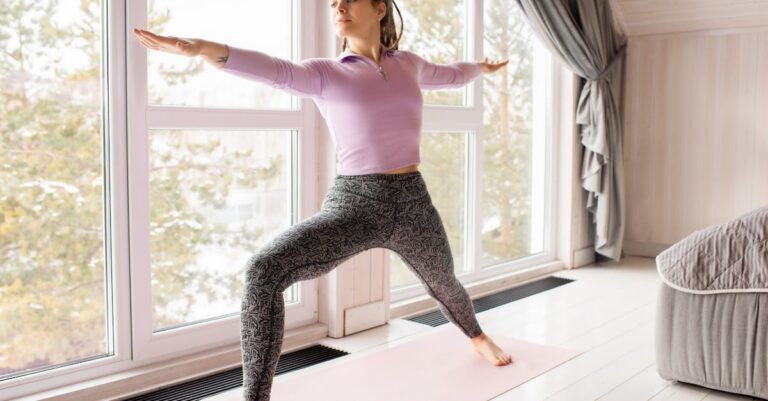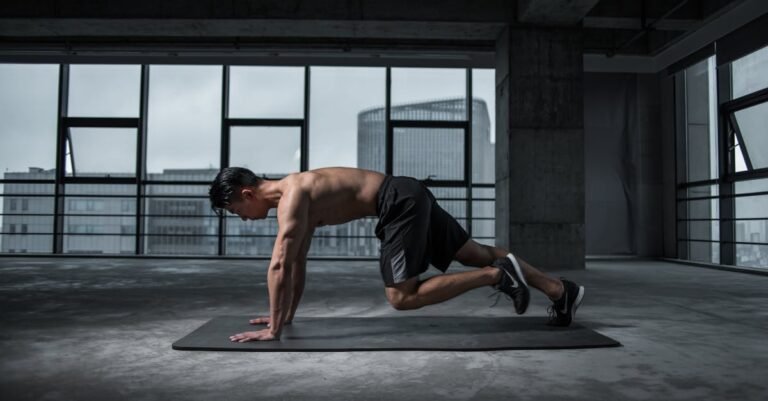Working out at home is awesome, right? You skip the gym commute, blast your own music, and maybe even exercise in your PJs (no judgment!). But here’s the snag: it’s easy to jump into things without the right prep, and suddenly, that little twinge in your shoulder or knee becomes a real pain, sidelining your fitness goals. Sound familiar? Maybe you tweaked your back trying a new yoga pose you saw online, or your ankles feel shaky after doing living room sprints. This article is all about dodging those annoying injuries. We’ll walk through some super simple exercises and habits you can build into your home routine to keep you feeling strong, moving well, and actually enjoying your workouts, injury-free.
Why Warming Up Isn’t Optional
Okay, let’s be real. Sometimes you just wanna get straight to the main workout. But skipping the warm-up is like trying to stretch a cold rubber band – it’s way more likely to snap! Warming up literally warms up your muscles, making them more flexible and ready for action. Think about it: blood starts flowing, delivering oxygen, and your joints get lubricated. This isn’t about sweating buckets; it’s about gently waking your body up. Even 5 minutes makes a huge difference. Imagine trying to sprint full-pelt the second you roll out of bed – ouch! Your muscles need that gradual wake-up call before you ask them to work hard.
Get Moving with Dynamic Stretches
Forget those old-school static stretches where you just hold a position forever *before* your workout. What you really want are dynamic stretches. These involve moving your body through ranges of motion that mimic the exercises you’re about to do. Why? Because they prep your muscles and joints for action without making them too relaxed or loose, which holding static stretches can sometimes do pre-workout. Think leg swings (forward/back and side-to-side), arm circles, torso twists, or walking lunges. It’s like a rehearsal for your body. If you’re planning on doing squats, doing some bodyweight squats or leg swings gets those specific muscles and joints ready for that movement pattern.
Your Core: The Unsung Hero of Stability
Your core isn’t just about getting six-pack abs (though that can be a bonus!). It’s your body’s center, the anchor for almost every move you make. A strong core – which includes your abs, back muscles, and hips – acts like a natural weightlifting belt, stabilizing your spine and pelvis. This is HUGE for preventing injuries, especially lower back pain, which pops up a lot with home workouts if your form isn’t spot-on. Simple exercises like planks (hold it steady!), bird-dogs (great for balance too), and dead bugs (lying on your back, moving opposite arm and leg) build this crucial stability without needing any fancy equipment. A stable core means better form and less strain on other body parts.
Balance Basics: Stop Wobbles Before They Start
Ever tripped over seemingly nothing or felt unsteady landing a jump? Working on your balance is key to preventing falls and those awkward twists that can lead to sprains, especially in your ankles and knees. Home workouts often involve dynamic movements, maybe jumping or quick changes in direction. Improving your balance helps you control these movements better. You can start super simple: try standing on one leg while brushing your teeth. Too easy? Close your eyes (carefully!). Or try walking heel-to-toe like you’re on a tightrope. Single-leg Romanian deadlifts (even without weight) are also fantastic for building balance and strengthening the muscles around your hips and legs.
Cooling Down: The Gentle Landing
Just like warming up prepares your body, cooling down helps it recover. Slamming on the brakes after going full speed isn’t great for your body (or a car!). A cool-down helps gradually bring your heart rate and breathing back to normal. This is the perfect time for those static stretches we skipped earlier – holding stretches for 15-30 seconds can help improve flexibility and ease muscle soreness. Think about stretching your hamstrings, quads, chest, and shoulders. It’s like telling your body, “Okay, the hard work is done, time to relax and repair.” This simple step aids recovery, making you less likely to feel excessively sore or tight, which could set you up for injury next time.
Listen Up! Your Body Knows Best
This might be the most important tip of all: listen to your body. It’s easy to get caught up in pushing harder or matching the person in the workout video, but pain is your body’s warning signal. There’s a difference between muscle fatigue (that good burn) and sharp, stabbing, or persistent pain. Don’t ignore those signals! If something hurts, stop or modify the exercise. Maybe you need to reduce the intensity, check your form, or choose a different move altogether. Pushing through pain is a fast track to injury. Remember Sarah from earlier? Ignoring that knee twinge turned a small issue into a bigger problem. Being mindful and respectful of your body’s limits is crucial for staying safe and consistent with your home workouts.
So, working out at home is fantastic for fitting fitness into a busy life, but staying injury-free is what keeps you in the game long-term. It doesn’t take complicated routines, just a little mindfulness. Remember to always warm up properly, use dynamic stretches to prep for movement, and build that all-important core strength and balance. Don’t forget to cool down afterwards and, above all, tune into what your body is telling you. Adding these simple steps – warming up, dynamic stretching, core work, balance practice, cooling down, and listening to your body – can make a world of difference. They help make your home workouts safer, more effective, and ultimately, more enjoyable. Stay safe and keep moving!










